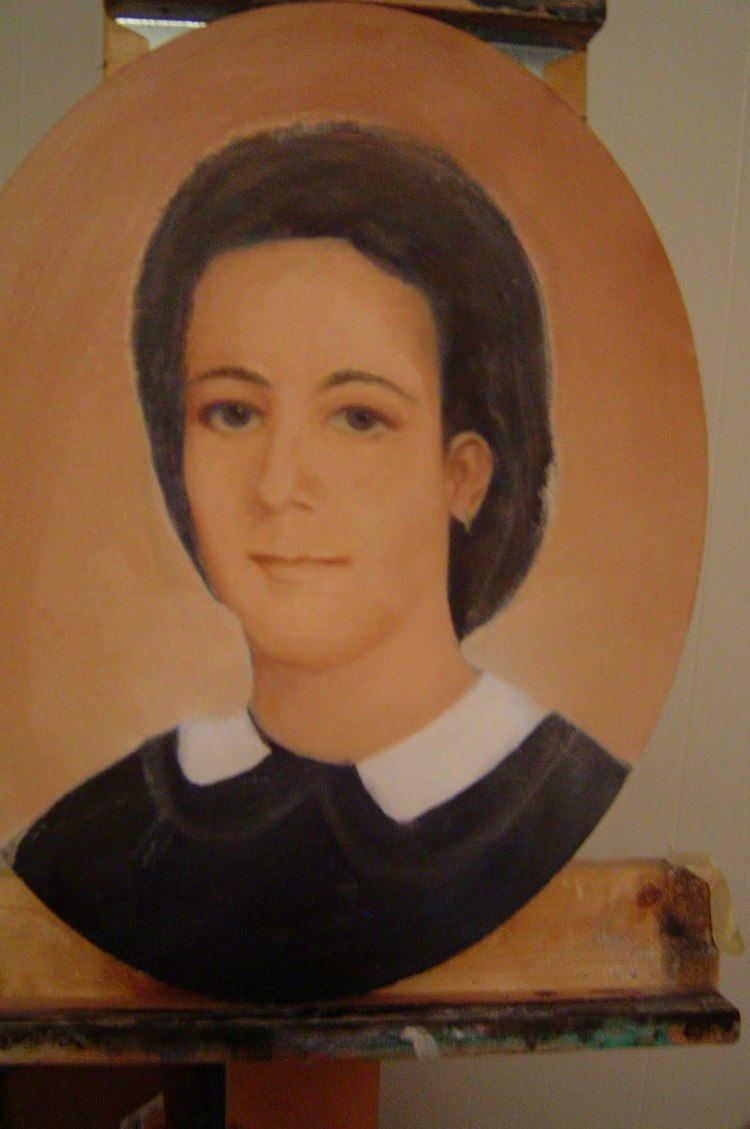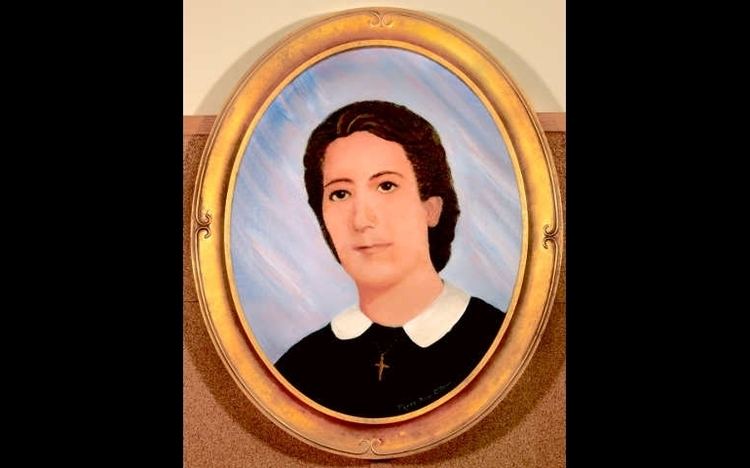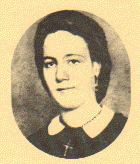Name Henriette DeLille | Role Nun | |
 | ||
Died November 17, 1862, New Orleans, Louisiana, United States Parents Jean-Baptiste Lille Sarpy, Marie-Josephe Diaz | ||
Venerated in Roman Catholic Church | ||
Henriette delille a placque honoring a creole candidate for sainthood
Venerable Henriette Delille (1813–1862) was an American Créole woman from New Orleans, Louisiana who founded the Roman Catholic order of the Sisters of the Holy Family in that city. Composed of free women of color, the order provided nursing care and a home for orphans, later establishing schools as well. They taught slave children when such education was prohibited by law.
Contents
- Henriette delille a placque honoring a creole candidate for sainthood
- Mother henriette delille a person of color creole nominated for sainthood
- Early life
- Founding
- The order today
- Death honors and cause of beatification
- Film treatment
- References

The order grew in number in the late 19th and the first half of the 20th centuries, reaching a peak of 400 sisters in 1950. They taught numerous students in black parochial schools. Since the turn of the century, African Americans in Louisiana, including Creoles, had been disenfranchised by the state legislature and subject to Jim Crow laws. In the 21st century, the order operates facilities for the poor in four states and Washington, DC in the United States, and has a mission in Belize.

In 1988 the order formally opened the cause with the Holy See of the canonization of Henriette Delille. In 2010 Pope Benedict XVI declared DeLille to be Venerable. A miracle attributed to her intercession was approved by a medical board in 2013, advancing her cause.

Mother henriette delille a person of color creole nominated for sainthood
Early life

Henriette Delille was born in New Orleans, Louisiana in 1813. Her mother, Marie-Josèphe "Pouponne" Días, was a free woman of color of New Orleans. Her father Jean-Baptiste Lille Sarpy (var. de Lille) was born about 1758 in Fumel, Lot-et-Garonne, France. Their union was a common-law marriage typical of the contemporary plaçage system. She had a brother Jean Delille and other siblings. Their maternal grandparents were Juan José (var. Jean-Joseph) Díaz, a Spanish merchant, and Henriette (Dubreuil) Laveau, a Créole of color. Their paternal grandparents were Charles Sarpy and Susanne Trenty, both natives of Fumel, France. Her maternal great-grandmother is said to be Cécile Marthe Basile Dubreuil, a woman of color considered to be a daughter of Claude Villars Dubreuil, born in 1716, who immigrated to Louisiana from France. Henriette and her family lived in the French Quarter, not far from St. Louis Cathedral.
Trained by her mother in French literature, music, and dancing, Henriette was groomed to find a white, wealthy male partner in the plaçage system, which was a type of common-law marriage. Her mother also taught her nursing skills and how to prepare medicines from herbs. As a young mixed-race Creole woman, under the watchful eye of her mother, Henriette attended many quadroon balls, a chief element of their social world.The balls were attended by people from the Creole community, and by white men looking for young women as plaçage partners.
Raised as Roman Catholic in the French tradition, DeLille was drawn instead to a strong religious belief in the teaching of the Catholic Church, and resisted the life her mother suggested. She became an outspoken opponent of plaçage, in which generally young, French or European-American men had extended relationships or common-law marriages with free women of color. The men often later married "white" European-American women after they were established financially. The men entered into contracts with the mothers of the young women of color, promising support and sometimes education of their mixed-race children, as well as financial settlements. In cases where a young woman was enslaved, the man might free her and their children. Some men maintained a relationship with a woman of color after marriage. DeLille believed the system was a violation of the Catholic sacrament of marriage.
Henriette was influenced by Sister Marthe Fontier, who had opened a school in New Orleans for girls of color. In 1827, at the age of 14, the well-educated Henriette began teaching at the local Catholic school. Over the next several years, her devotion to caring for and educating the poor grew, causing conflict with her mother.
Delille was confirmed in 1834.
During documentation of the sainthood cause for Delille, the congregation found funeral records from the 1820s "that suggested that as a teenager, she may have given birth to two sons, each named Henry Bocno. Both boys died at a young age." (It was customary to name the first son after the father. If the child died, the next male born would be given the father's name.)
The archdiocesan archivist Charles Nolan said in 2005 that, even if Delille "had given birth to two children out of wedlock, it happened two years before her confirmation in 1834." Her biographer, Benedictine Father Cyprian Davis, said that her confirmation showed her increased commitment to God, as did her life in the following years.
Founding
In 1835, Delille's mother Marie-Josèphe suffered a nervous breakdown. Later that year, the court declared her incompetent, and granted Delille control of her mother's assets. After providing for her mother's care, Delille sold all her remaining property.
In 1836 she used the sale proceeds to found a small unrecognized congregation or order of nuns, which she named as the Sisters of the Presentation. The original members consisted of Delille, seven other young Créole women, and a young French woman. They cared for the sick, helped the poor, and instructed free and enslaved children and adults. They took into their home some elderly women who needed more than visitation, and thereby opened America's first Catholic home for the elderly.
Her brother Jean Delille was strongly opposed to her activities. He, like other members of their family, could pass for white. The Delille children were octoroons, seven-eighths European or white in ancestry. He felt that his sister's activities within the Créole community exposed his partial African ancestry to his white associates.
Estranged from Henriette, Jean Delille moved with his wife and children away from New Orleans to a small Créole of color community in Iberia Parish, Louisiana, called La Côte-aux-Puces (Flea Coast). The agricultural area is now known as Grand Marais. It is the area on the Bayou Teche between present-day Olivier, Louisiana, to below Jeanerette, Louisiana.
In 1837, Father Etienne Rousselon of New Orleans secured formal recognition of the new congregation from the Holy See. DeLille took the title of Mother in the order. In 1842, the congregation changed its name to the Sisters of the Holy Family. Henriette Delille continued a life of service to the poor of New Orleans.
She died in 1862, during the American Civil War, when the city was occupied by Union troops. Friends attributed her death to a life of service, poverty, and hard work.
At the time of Delille's death, on November 16, 1862, the order had 12 members. The sisters were noteworthy for their care of the sick and the dying during the yellow fever epidemics that struck New Orleans in 1853 and 1897.
By 1909, the order had grown to 150 members; it operated parochial schools in New Orleans that served 1,300 students. In this period, the state of Louisiana had disenfranchised most African Americans by raising barriers to voter registration and it imposed legal segregation of public facilities, including schools. By 1950, membership in the order peaked at 400.
The order today
The Sisters of the Holy Family remain active today. Its more than 200 members serve the poor by operating free schools for children, nursing homes, and retirement homes in New Orleans and Shreveport, Louisiana; Washington, D.C; Galveston, Texas; Little Rock, Arkansas; and California in the United States; and a mission in Belize.
Death, honors, and cause of beatification
Delille died in 1862 with a reputation of holiness. The city of New Orleans named a street as Henriette Delille in her honor.
In 1988 her order opened the cause for her canonization with the Holy See. The Congregation for the Causes of Saints gave its formal assent on 22 June 2010 for the commencement of the cause of beatification with the declaration of "nihil obstat" (nothing against). Delille was given the title of Servant of God. Her cause was endorsed "unanimously" in 1997 by the United States Catholic bishops.
Pope Benedict XVI approved her heroic virtues and named her Venerable on 27 March 2010. A claimed miracle by her intercession was being investigated in 2005. A Medical Board close to the congregation approved the miracle on 16 May 2013, advancing her cause.
